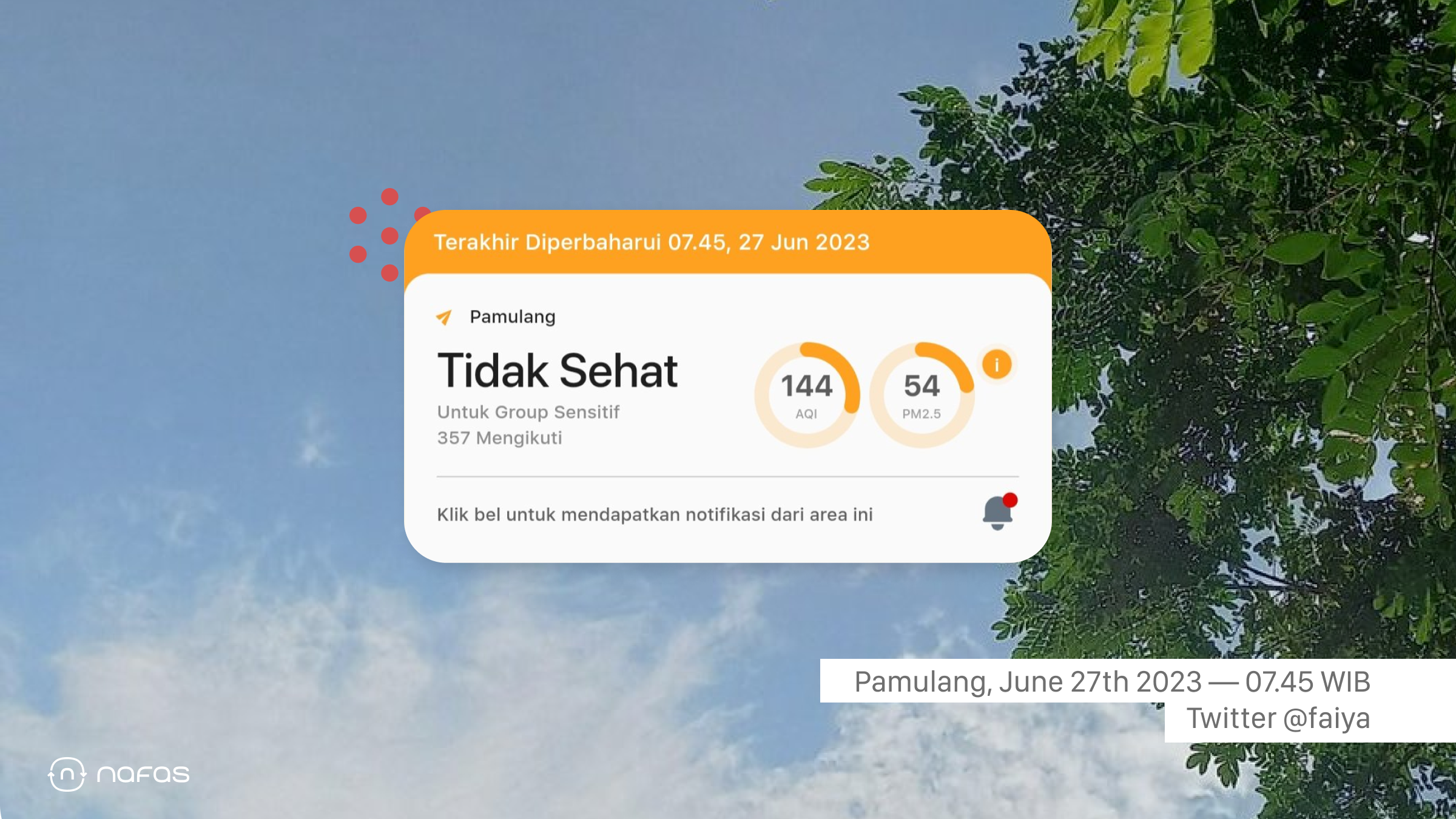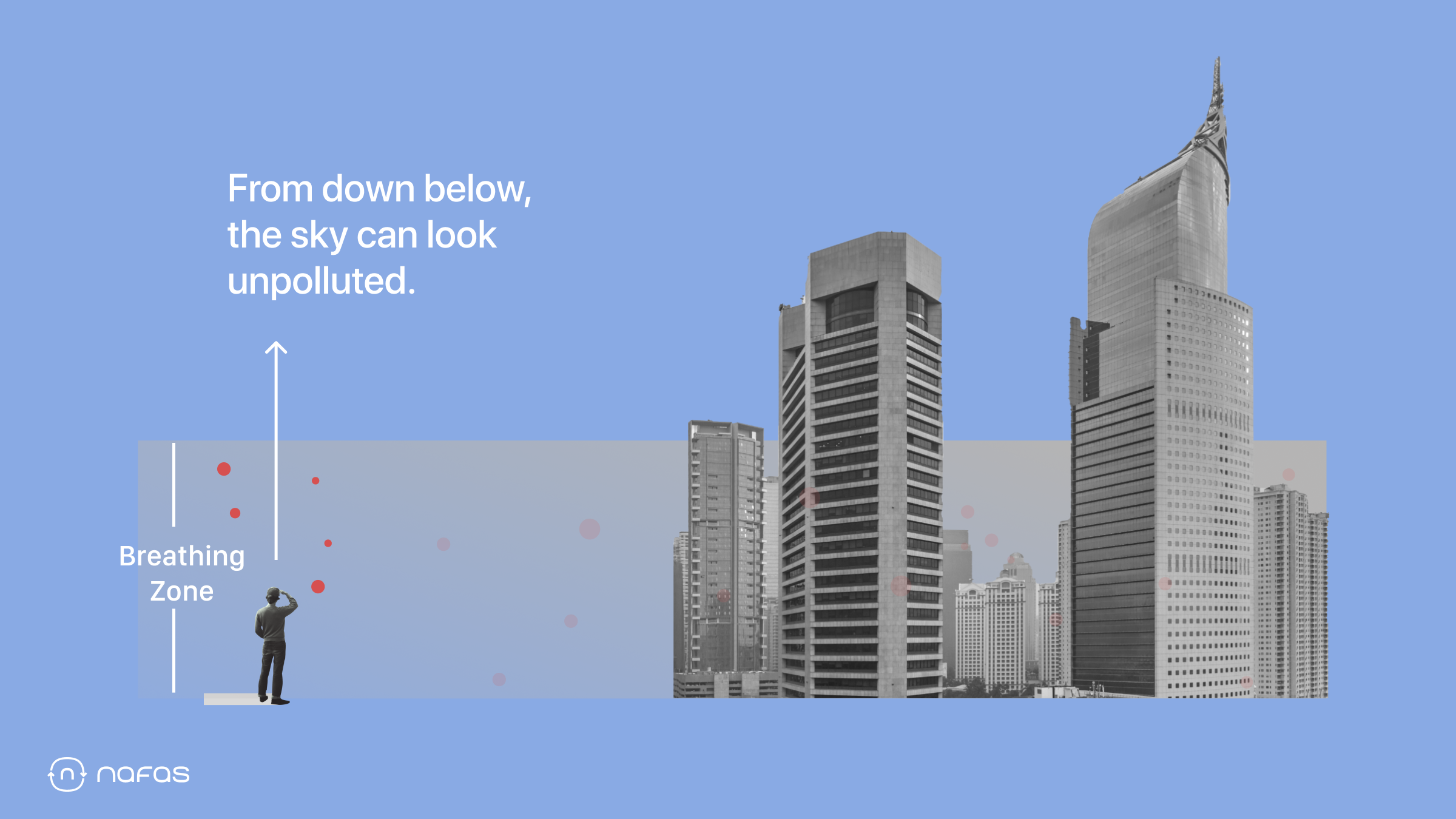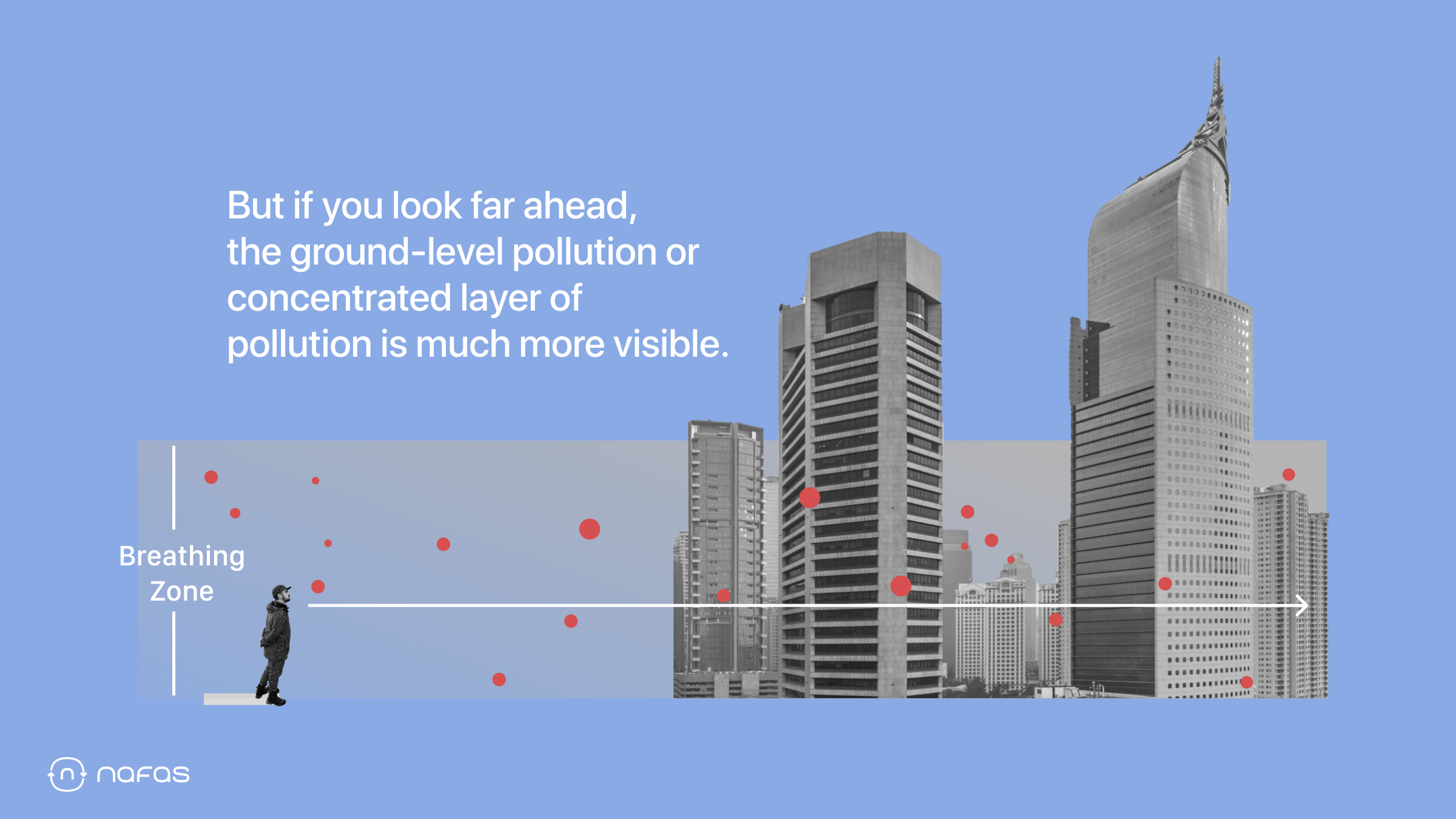Blue sky equals clean air, is that true?
Stepping outside, looking at the clear blue sky, and watching the clouds in the morning, is certainly happy, isn't it? The clear sky also makes us think of the 'clean air' we breathe.
The photo below is the clear sky in Pamulang taken by @faiya on her Twitter account.
The clear blue sky on June 27, 2023, did not represent the clean air in Pamulang. The reason is, the air quality in the area is actually 'Unhealthy for Sensitive Groups' when checked through the Nafas app. Even the amount of PM2.5 was 54 µg/m3, almost 11 times above the WHO standard, which is 5 µg/m3!
Blue skies don't always mean healthy air quality or no pollution ☁️🙅🏻
Not seeing grayish smoke and murky-colored skies doesn't mean the air pollution is gone. For more clarity, check out this map of the Nafas sensor distribution in Greater Jakarta on June 27!
After being traced, the air quality in Jabodetabek on June 27, 2023 was dominated by 'Unhealthy' air, both for Sensitive Groups and for the General Public. This can be seen from the many Orange and Red symbols that filled the map of Jabodetabek that day - learn the meaning of the symbols and colors on the Nafas map here.
Yet, in just one hour, air quality deteriorated in many locations, including the South Tangerang area.
PM2.5 pollution at the ground level measured from the breathing zone (1.5 - 8 meters from the surface) 😷
Looking at the blue sky as a parameter of air quality is inaccurate. Nafas measures PM2.5 pollution in the breathing zone which is 1.5 - 8 meters away from the surface. If we look up from the breathing zone, the blue color we see in the sky will certainly 'end' a few meters above us due to air pollution.
Look far forward to see the dirty air caused by the accumulation of pollution on the surface 📈
The better action is to look far forward, not upwards (at the sky). These tiny particulates have been shown in many scientific studies to reduce visibility. They can affect visibility by changing the way light is absorbed and dispersed in the atmosphere. Therefore, when ground-level pollution levels are high, we will easily be noticed by the dirty air around us.
✅ Do these tips to avoid air pollution!
The fact that the air where we live has been polluted is inevitable, but prevention remains doable. Here are some tips that the Nafas team has put together for you to stay away from air pollution exposure:
- Download the Nafas app and check the air quality regularly
- Favor important locations to make checking easier
- Wear a mask when leaving the house (preferably a respirator type such as N95)
- When pollution is high, stay at home
- Follow other Nafas recommendations, such as closing vents and using an air purifier with a HEPA filter to help clean the air